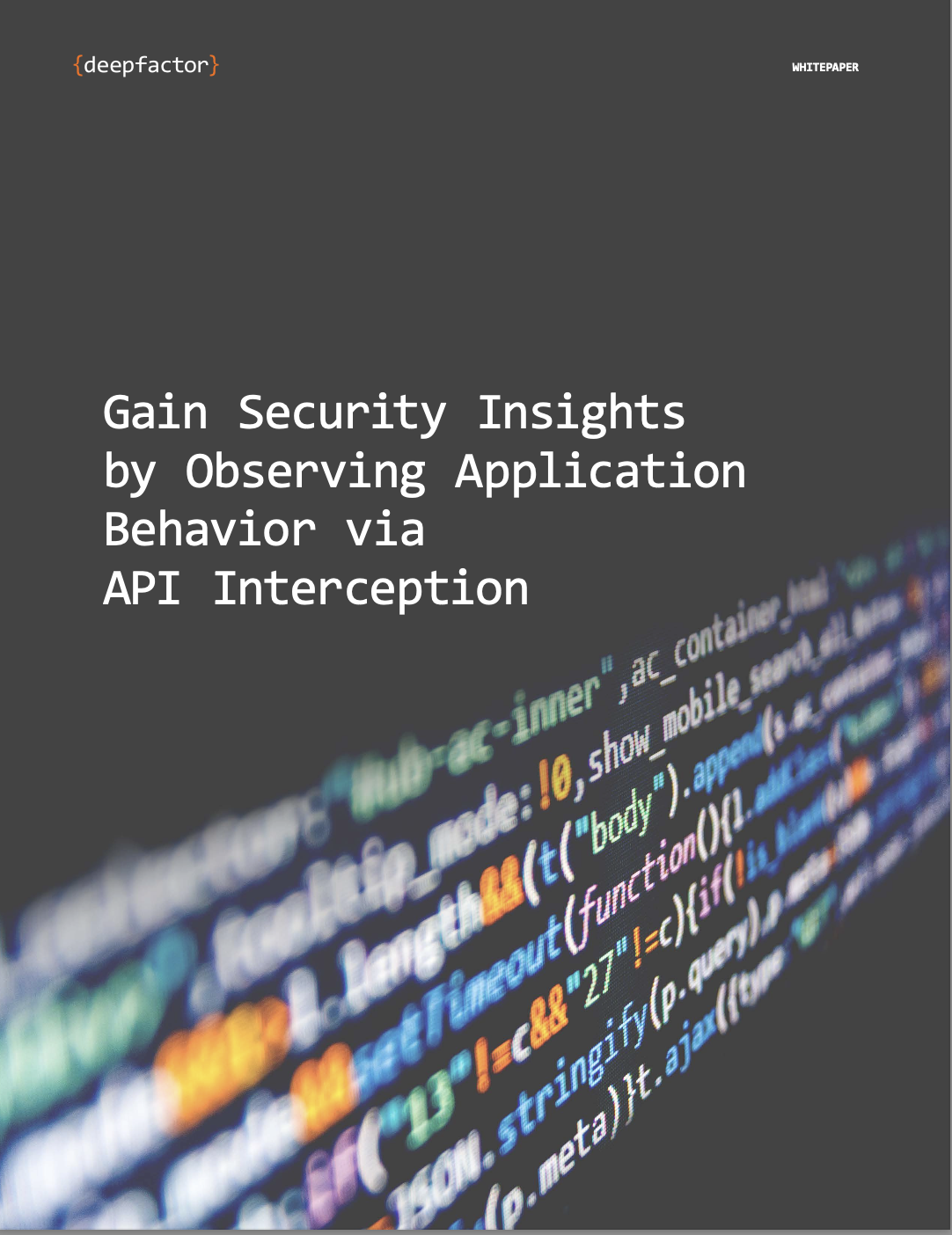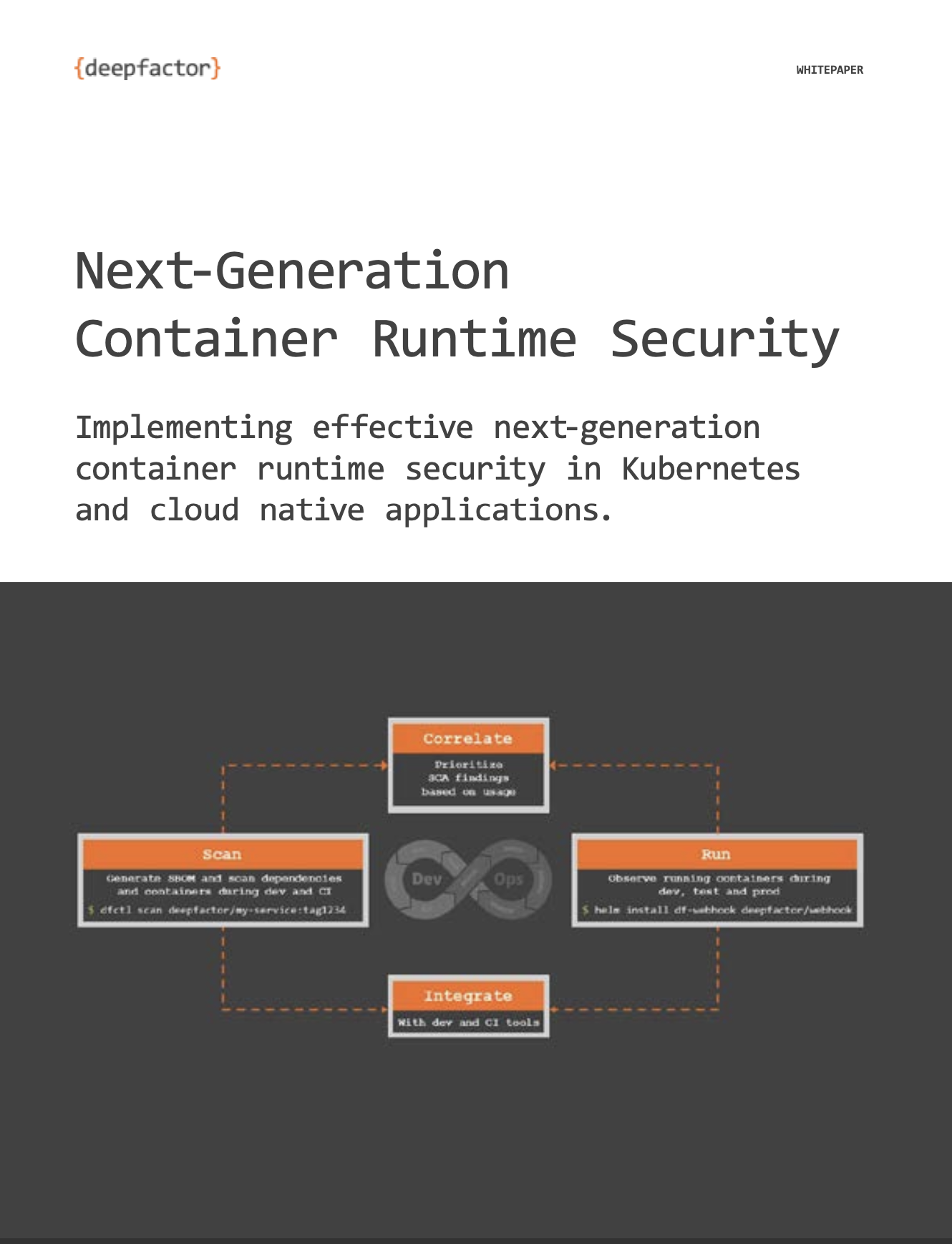
There are many ways to perform API interception. This whitepaper outlines the most common techniques, including:
- Inline hooking
- Callbacks
- Import table rewriting
- Method rewriting
- Web API Intercept
and details strengths and weaknesses of each approach. This paper also reviews how Deepfactor, an application security platform, has used API interception for the purposes of providing engineering teams with contextual application security insights.
Empower your engineering teams: Deepfactor allows engineering teams to quickly discover and resolve security issues, supply chain risks, and compliance violations during development.
Our open-source scanning software includes seamless cloud native deployment, with developers able to drop Deepfactor directly into the container or Kubernetes cluster. We drive the adoption of DevSecOps, integrating AppSec into the CI/CD pipeline to reduce noisy alerts and prioritize first and 3rd party code that can’t be found with static code scanning.
With unparalleled visibility into application vulnerabilities through Deepfactor’s simple, integrated platform, you avoid runtime risks, accelerate productivity, and reduce alert fatigue. This way, your engineering and development teams are empowered to develop secure and compliant cloud native applications.


